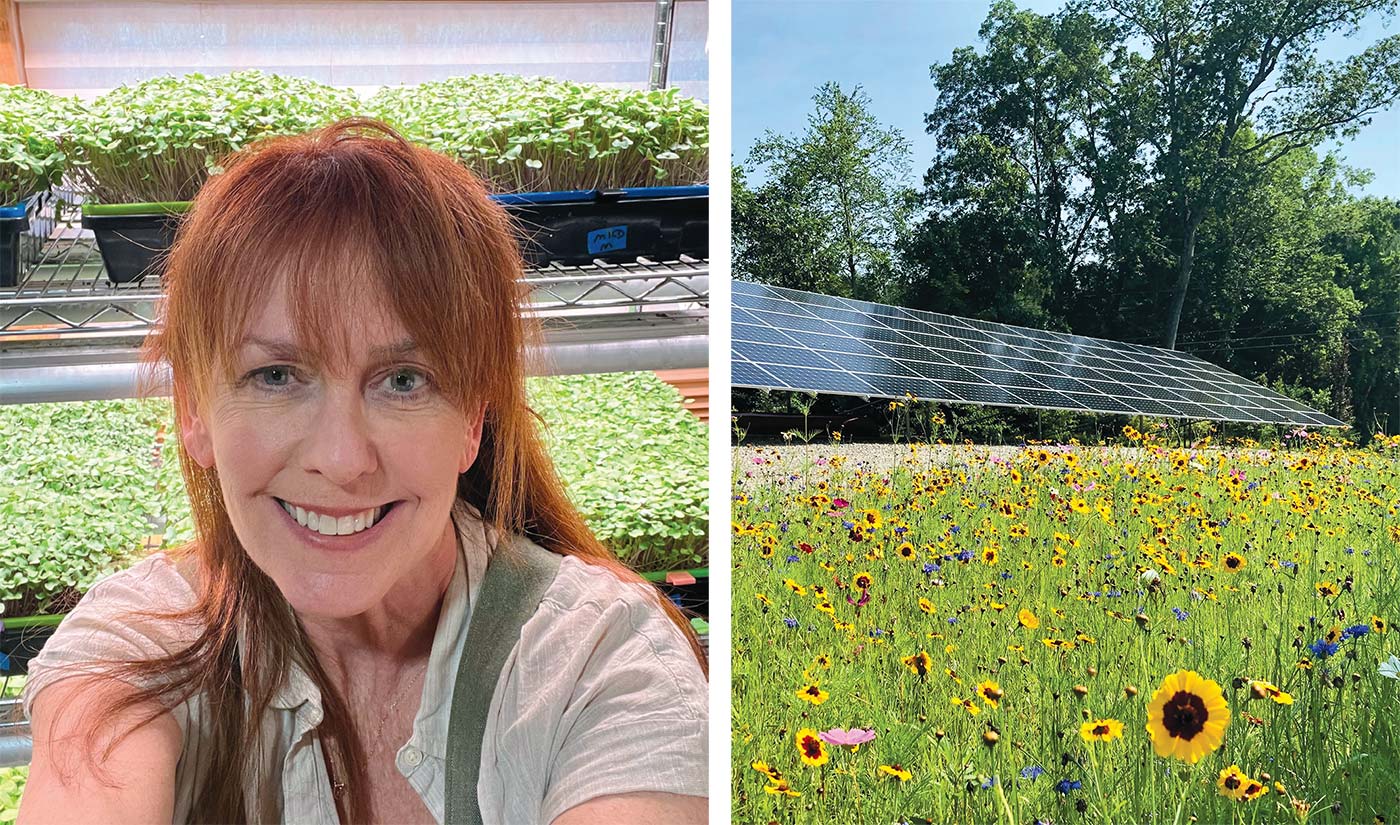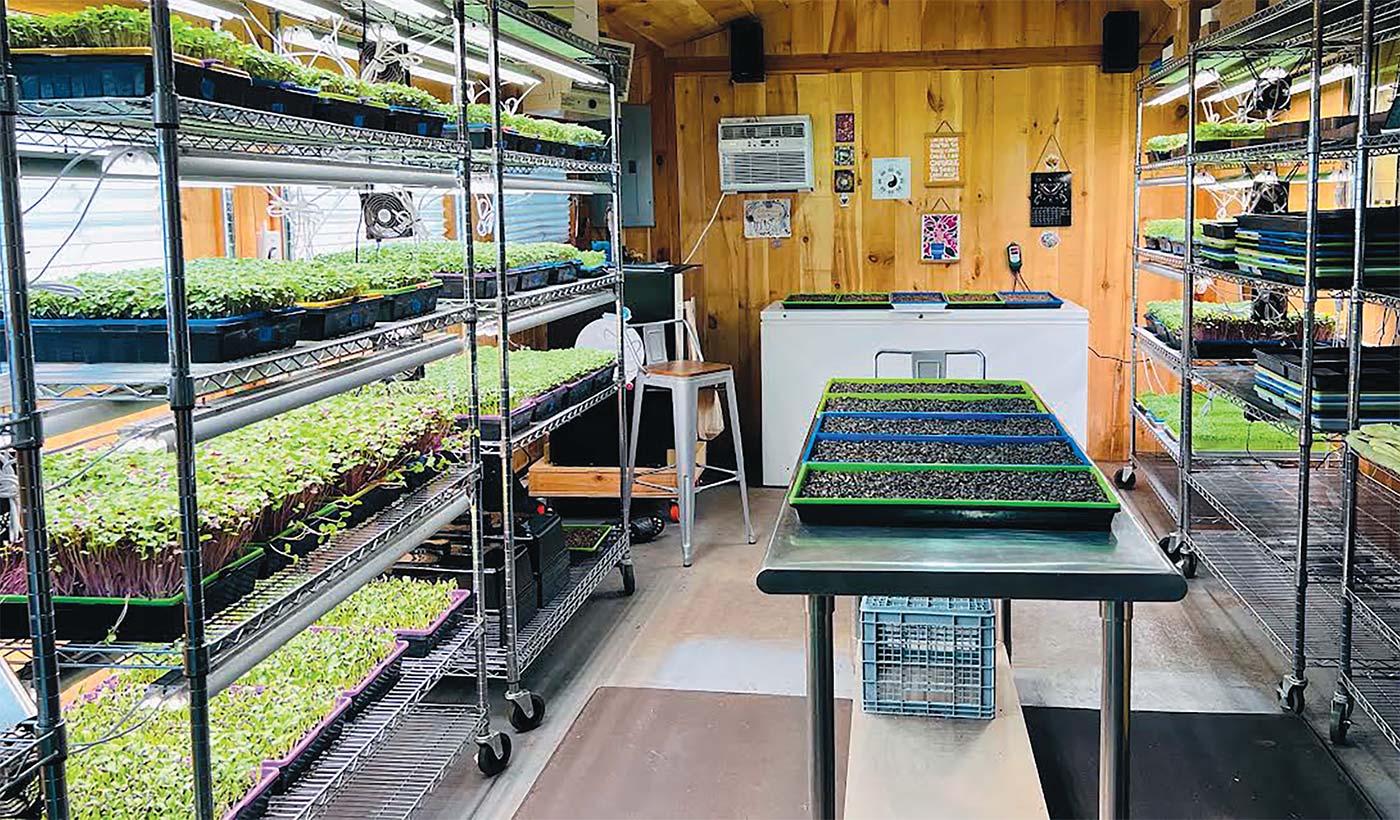HydroCat Microgreens Grows Nutrient-Rich Food for the Community
Incredible things can grow from a tiny seed. When a seed is placed in the right environment and receives the nutrients, water, air, and light it needs, growth is possible. In a matter of days, a small seed splits open so tiny roots can emerge, followed by the seed-leaves of the plant known as cotyledons. Around 7-14 days after seeds are planted, microgreens can be harvested.
At HydroCat Microgreens in East Hampton, Connecticut, grower Sheila Mullen is cultivating nutrient-rich microgreens for the community. Sheila has always been an avid gardener due to the influence of her late mother who worked for the New York City Parks Department as a professional gardener. During the pandemic, Sheila started growing microgreens for her family, friends, and a local food bank. “I was just diving into research on microgreens and became absolutely obsessed with them,” states Sheila.
One thing Sheila finds extremely compelling is the incredible amount of nutrients packed into such tiny plants. The biological reason for this is that the cotyledons store food reserves used during the plant’s initial stage of growth. Research on microgreens completed at the University of Maryland found that microgreens can have up to 40 times more nutrients than mature plants. Microgreens are also an excellent source of antioxidants which may help minimize damage that occurs to cells in the body. The amount of β-carotene found in wasabi, pea, basil, and amaranth microgreens was “comparable to that of carrot and sweet potato.”

From left: Owner Sheila Mullen in the growing room; The solar array that provides 100% of the power for HydroCat
What started as just one rack of microgreens soon turned into a whole growing room packed with many microgreens. Sheila grows sunflowers, radish, broccoli, kale, and other varieties.
What started as just one rack of microgreens soon turned into a whole growing room packed with many microgreens. Sheila grows sunflowers, radish, broccoli, kale, and other varieties. The plants are sensitive to their environment and Sheila states, “You must take good care of them.” Sheila repurposed a portion of her barn which once housed Fat Orange Cat Brewery so that she could grow the microgreens in a temperature and humidity-controlled space. Sheila enjoys providing tours of her growing facility and recently had the Portland Garden Club visit. Chickens and goats also happily roam her East Hampton property. She welcomes visitors and encourages members of the community to reach out for a tour.
A unique aspect of Sheila’s growing operation is that it is 100% powered by solar energy. One of Sheila’s dreams was to produce solar power on her property where HydroCat Microgreens is currently located. A US Department of Agriculture (USDA) Rural Energy for America (REAP) grant helped bring solar energy production to attainment. Environmental sustainability is at the forefront of Sheila’s venture.
HydroCat Microgreens are grown hydroponically, which is where the “hydro” part of the name comes from. Rather than growing the microgreens in soil, the tiny plants take root in an Organic Materials Review Institute (OMRI) listed sustainable substance known as coco coir. Coco coir is fiber from coconuts and easily absorbs the nutrient-rich solution that is used to feed the plants.
To help others learn how to grow microgreens, Sheila has created microgreen growing kits which contain growing medium, seeds, trays, spray bottles, and instructions to get even the youngest growers started. Sheila would love to have these kits utilized in local schools so children can learn how plants grow and the importance of eating fresh vegetables for proper nutrition and health.
So how should someone eat microgreens? Microgreens can easily be added to any salad, layered into a sandwich, or used as a garnish. Chefs at local restaurants use Sheila’s microgreens to add a beautiful and delicious element to their food.
HydroCat Microgreens has expanded significantly since the days of the pandemic. Sheila is still providing microgreens to the Epoch Arts Food Bank in East Hampton which her husband assists with, and you can also find her microgreens at local restaurants, on the Healthy PlanEat online farmers market, small local grocery stores, and at local farms. Sheila’s business is sure to keep on growing!
Located at 47 Tartia Rd, East Hampton – More at www.hydrocat-microgreens.square.site





